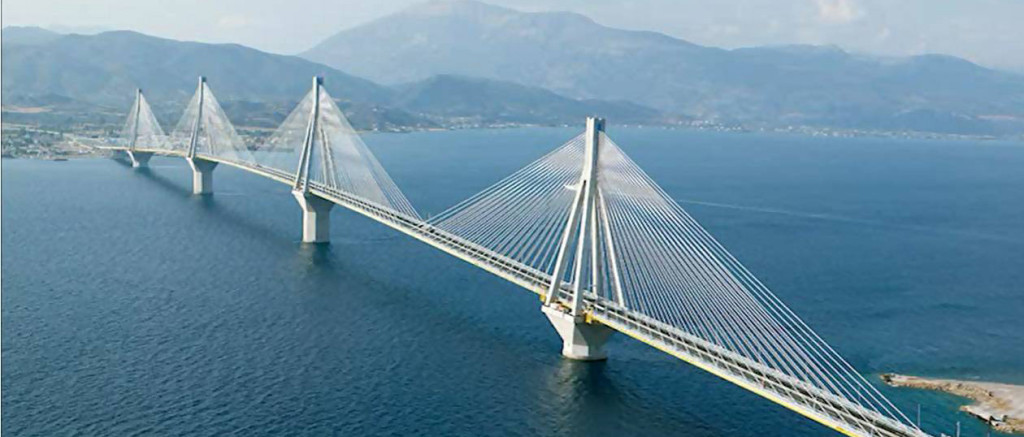Buildings and bridges join the ‘internet of things’
Virginia Tech Carilion School of Medicine and Research Institute, a building that uses SMART solutions. ©AECOM photo by Cameron Triggs.
What do the following things have in common?
- Telephone networks
- Supervisory control and data acquisition (SCADA) systems
- Video games
- Sensors
- Computers in products such as vacuum cleaners, airplanes and cars
- Robots used in manufacturing plants
They are all digital and connectable. As the drive toward increased digitization continues, many industries have started linking machinery, equipment and other physical assets with networked sensors and actuators to capture data and manage performance, enabling machines to collaborate and even act on new information independently.
Over the next few years, I see networked sensors and actuators proliferating and affecting companies, systems and individuals in multiple ways. While many companies, especially equipment manufacturers, already employ the Internet of Things in pioneering ways, this trend is just starting to take off in the construction industry.
SMART, which stands for Self-Monitoring Analysis and Reporting Technology solutions, is a term that can be applied to any asset. For example, a SMART bridge or building has the ability to alert us of its changing condition by using standard technologies. This is becoming possible because the physical and digital worlds are converging, bringing greater efficiency and new opportunities.
A key component of SMART is remote monitoring of infrastructure like bridges, dams, buildings, transportation assets and water and environment resources. The use of SMART solutions on existing infrastructure has huge potential benefits from improving operational efficiencies, reducing total cost of ownership, extending the life of assets, reducing the risk of catastrophic failures, managing regulatory compliance and improving sustainability.
One example of a SMART solution would be placing sensors like accelerometers, tilt meters, temperature sensors and acoustic sensors on bridges, dams, buildings and other structures to continuously monitor structural health. These sensors would allow us to receive an early warning of changing conditions, potentially extending the need for periodic inspections by human inspectors. This real-time remote monitoring approach is also able to capture changes in between inspections, which would otherwise go unnoticed. In addition, this helps reduce the risk of catastrophic failures and can reduce maintenance costs by supporting the move to preventative and predictive maintenance models.
The Rion-Antirion Bridge, a SMART bridge.
Another example of a SMART solution is remote monitoring of energy consumption and performance of building systems and equipment, from heating, ventilation, and air conditioning (HVAC) to air compressors, to ensure that all systems operate at peak efficiency and in combination with one another. Real-time remote monitoring enables the identification of anomalies in building systems that might otherwise go unnoticed until they become significant expenses and provides opportunities for continuous commissioning by constantly monitoring all systems to ensure they are within parameters for optimal operating conditions.
Providing digital instrumentation to infrastructure assets is the first critical step in making new and existing assets SMART assets. Several forces are at work to make infrastructure SMART and more intelligent.
- Costs of deployment: Instrumentation costs have declined dramatically, making it possible to equip and monitor bridges, dams, buildings, and water and environment resources in a more economical manner than in the past.
- Communications: The cost of network connectivity has fallen; at the same time coverage from cellular networks, wired or wireless networks or point-to-point networks, has steadily widened. Meanwhile, the introduction of new, high-speed networks such as fourth generation (4G) mobile networks will start to allow new kinds of high bandwidth applications.
- Computing power and the rise of the cloud: Continued improvements in microprocessor chips and the advent and proliferation of cloud computing are providing flexible and scalable technology platforms to support SMART applications.
- Advanced analytics: Advances in “big data” software tools and analytics combined with industry knowledge provides a means to understand the massive quantities of data generated by these intelligent assets, which enables better decisions to be made resulting in better outcomes on client projects.
While there are many drivers accelerating the adoption of SMART solutions in infrastructure, some steps worth considering include developing a return on investment for each project, identifying the various data sources and formats since data normalization and integration is not easy, and developing an information security plan.
The explosion of Internet of Things applications provides many opportunities for companies to improve performance and create new service offerings. An important challenge for these companies will be to apply their deep domain knowledge along with analytical tools to the enormous amount of data that will flow from these SMART assets and unlock the true value of this trend.
Ryan Dsouza (ryan.dsouza@aecom.com) is innovation and technology director in AECOM’s Business Technology Solutions group.







